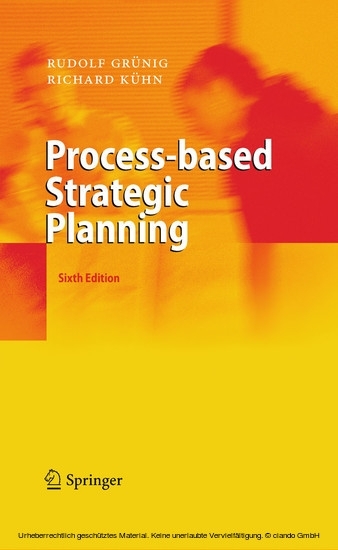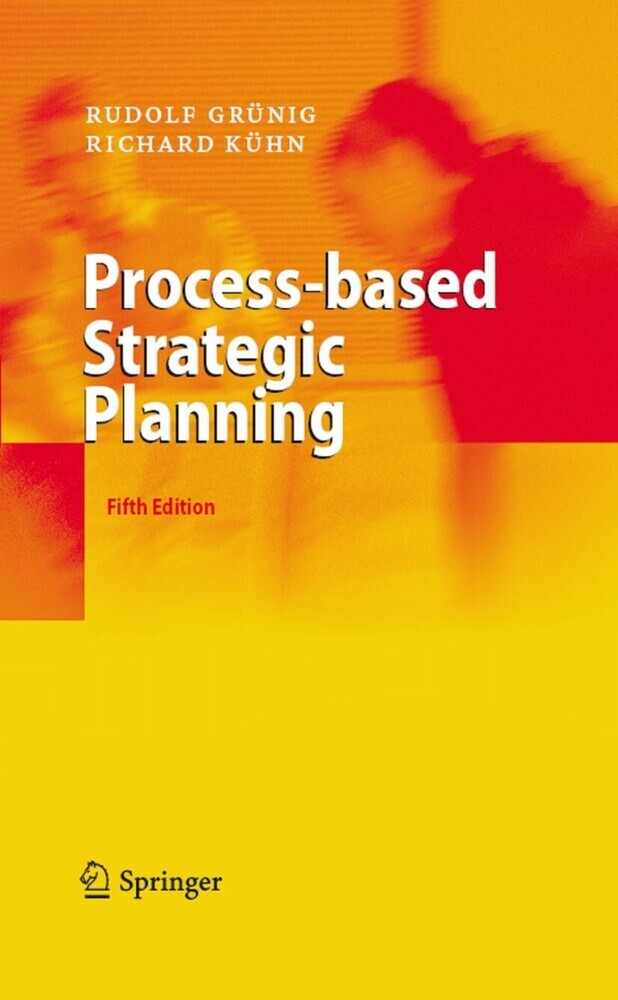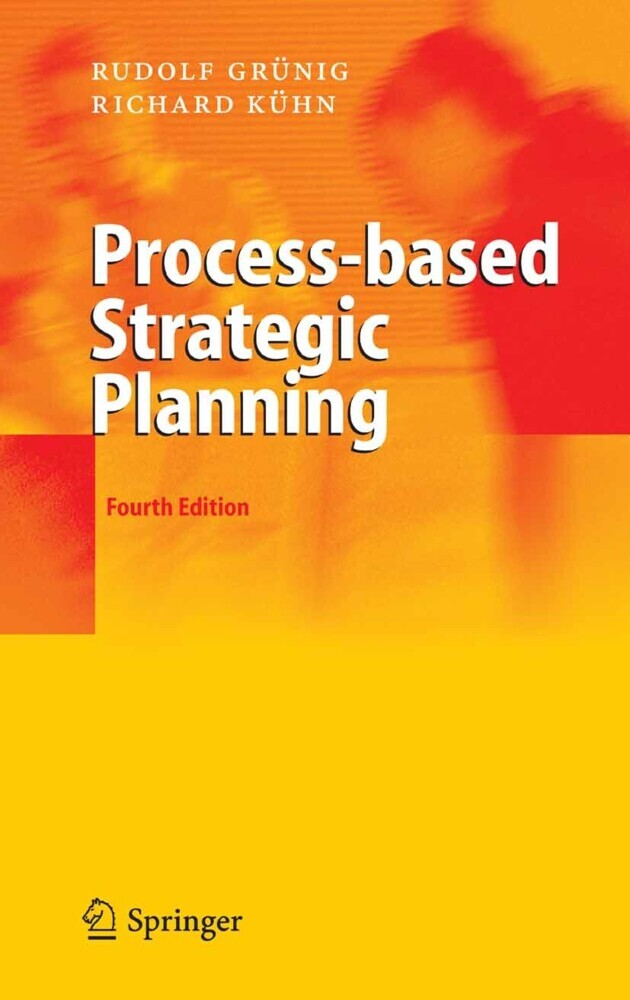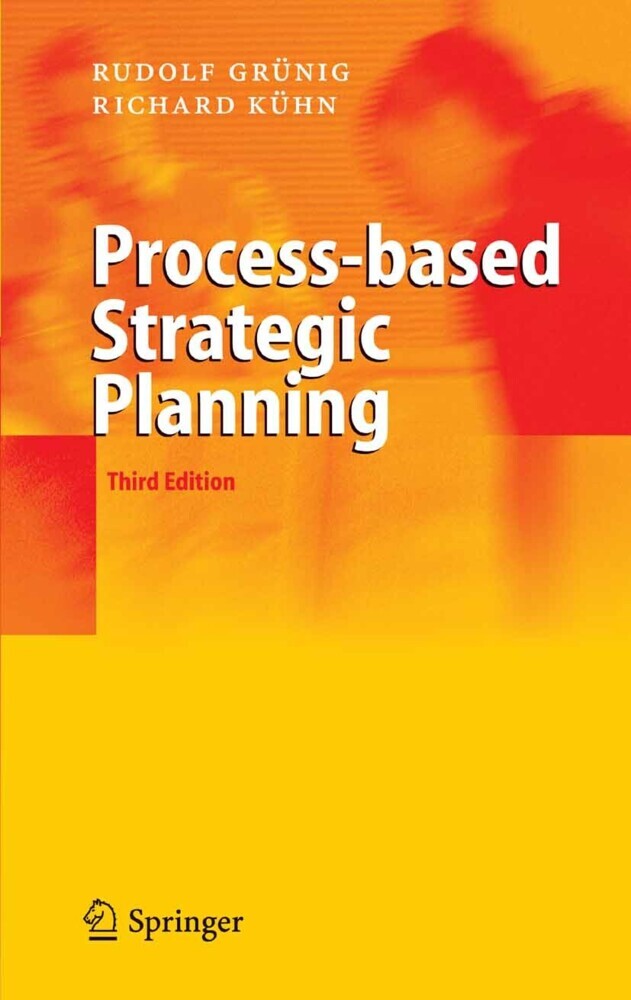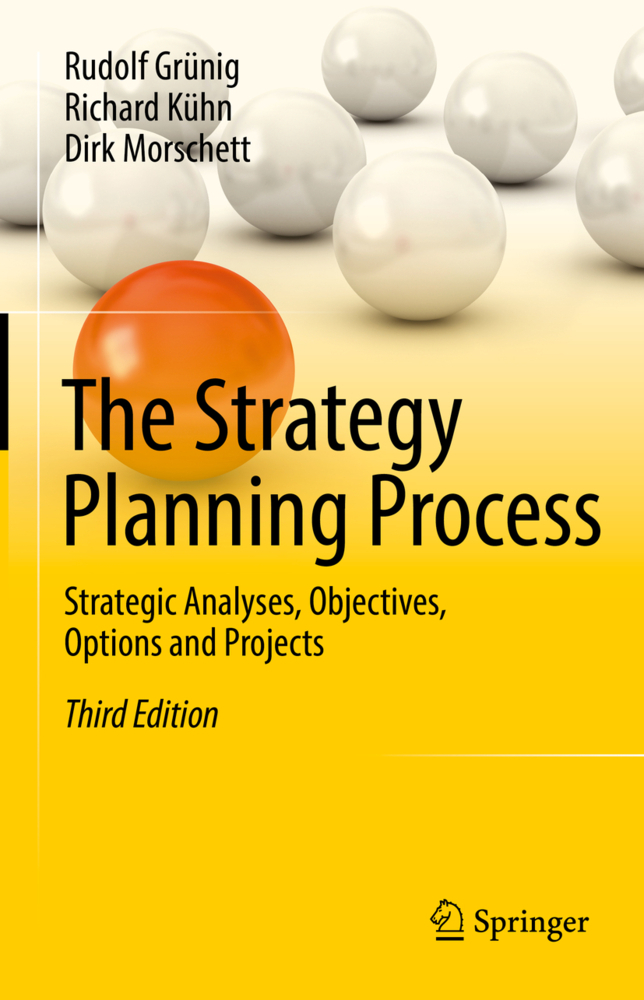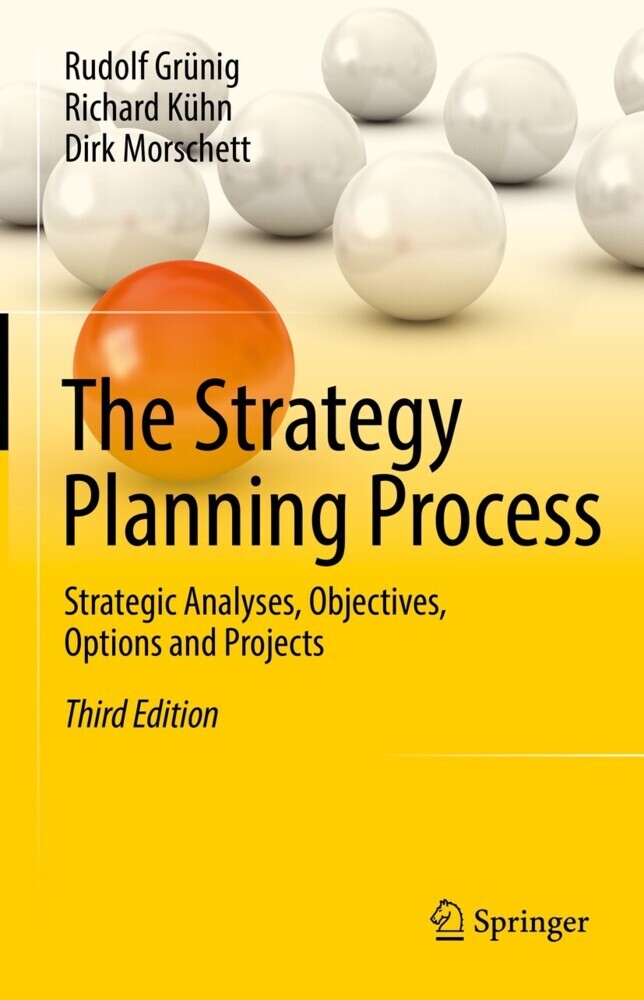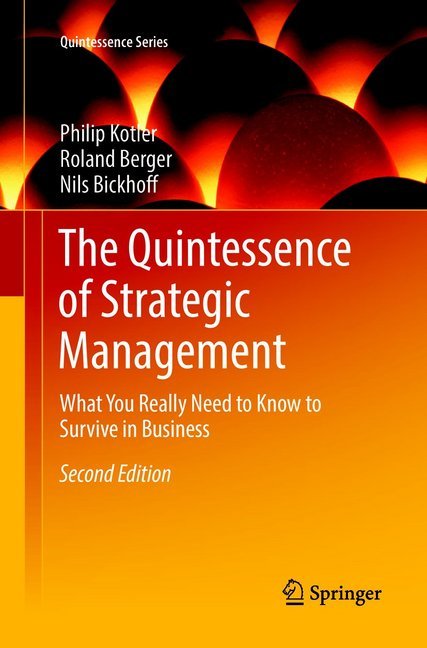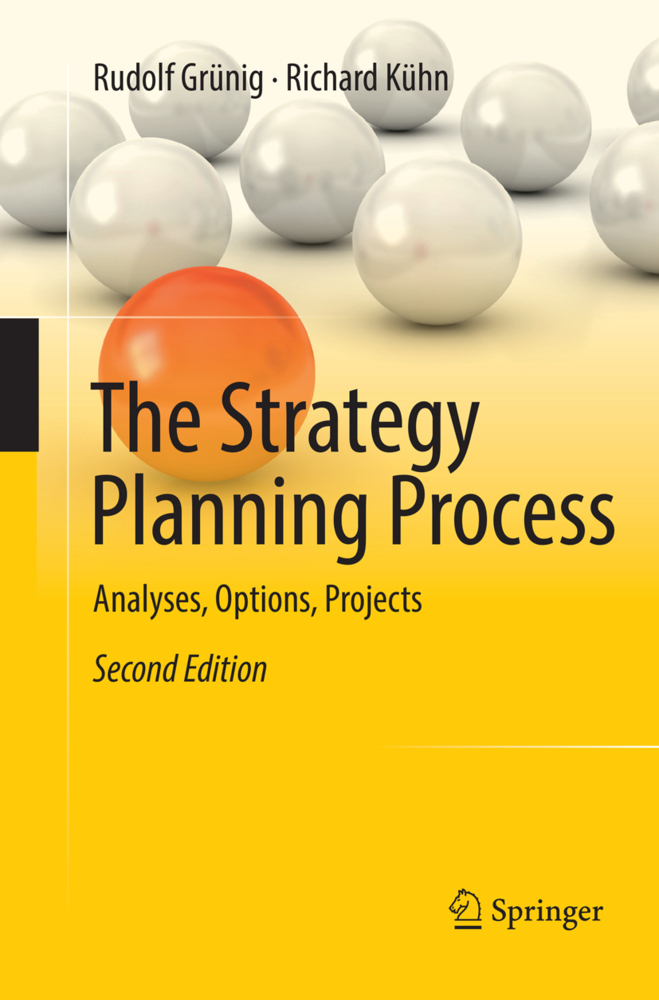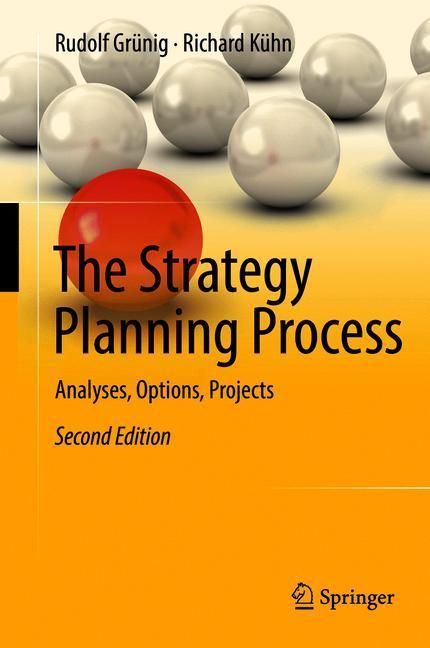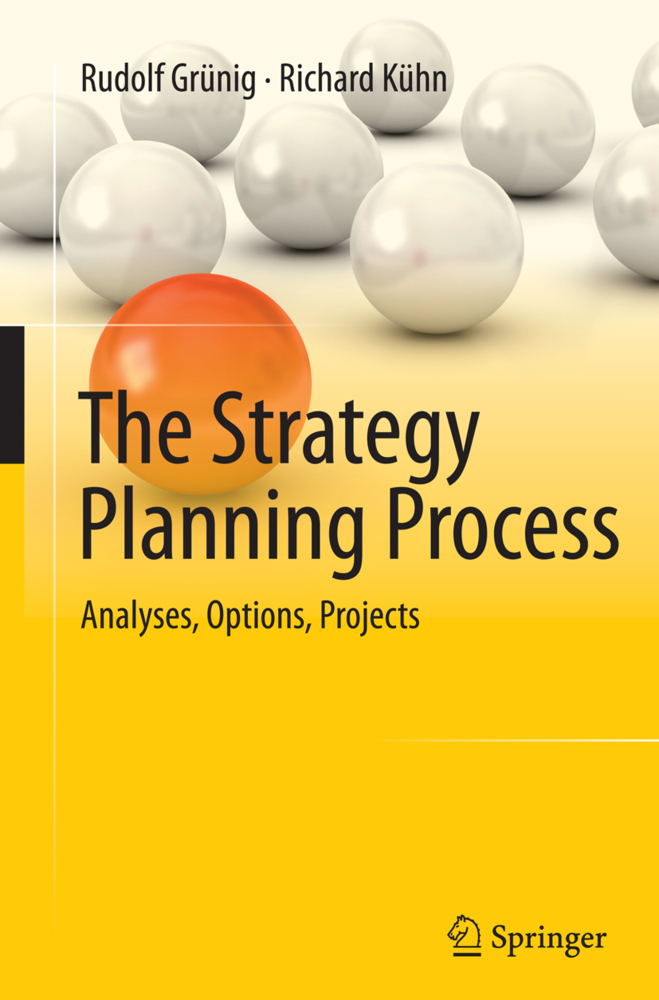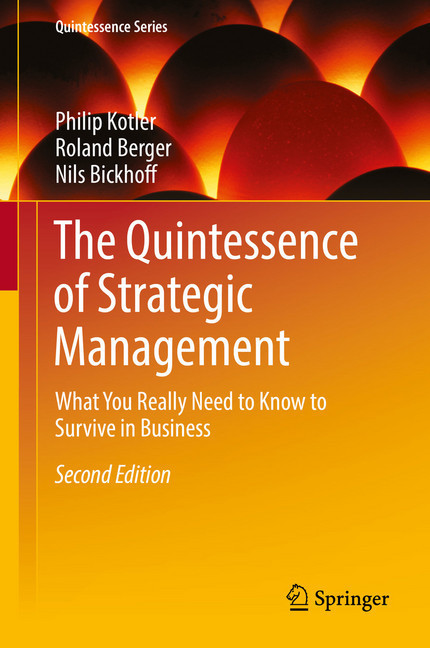A completely revised and updated version of this book was published in 2015 under the title 'The Strategy Planning Process'.
A company's strategies define its future direction, specifying not only target market positions for many years to come, but also the key competitive advantages both at the level of market offers and of resources. Developing future strategies is an important and complex task, which is the core issue in this book. After a short introduction to strategic planning, a heuristic process for determining future strategies is presented. This process is divided into eight steps, and for each of these steps, detailed recommendations for problem-solving are provided and illustrated through many concrete examples. The new edition is improved.
Univ.-Prof. Dr. rer. pol. Rudolf Grünig is full time Professor of Business Administration and Lecturer in Strategic Management in various postgraduate programs at the University of Fribourg, Switzerland.
Professor Dr. Richard Kühn was Ordinarius of Business Administration and Director of the Institute of Marketing and Management at the University of Berne until 2004. Since fall 2004 he is Emeritus, adviser/consultant, member in boards of various Swiss companies. He is author of numerous textbooks and articles in the fields of Marketing and Management.
A company's strategies define its future direction, specifying not only target market positions for many years to come, but also the key competitive advantages both at the level of market offers and of resources. Developing future strategies is an important and complex task, which is the core issue in this book. After a short introduction to strategic planning, a heuristic process for determining future strategies is presented. This process is divided into eight steps, and for each of these steps, detailed recommendations for problem-solving are provided and illustrated through many concrete examples. The new edition is improved.
Univ.-Prof. Dr. rer. pol. Rudolf Grünig is full time Professor of Business Administration and Lecturer in Strategic Management in various postgraduate programs at the University of Fribourg, Switzerland.
Professor Dr. Richard Kühn was Ordinarius of Business Administration and Director of the Institute of Marketing and Management at the University of Berne until 2004. Since fall 2004 he is Emeritus, adviser/consultant, member in boards of various Swiss companies. He is author of numerous textbooks and articles in the fields of Marketing and Management.
1;Preface;6 2;Brief contents;8 3;Contents;10 4;List of figures;18 5;List of insets;24 6;Introduction;26 7;Part I Idea of strategic planning;30 7.1;1 Strategies, strategic planning and success potentials;31 7.1.1;1.1 Strategies;31 7.1.2;1.2 Strategic planning;32 7.1.3;1.3 Building success potentials as main purpose of strategic planning;32 7.2;2 Development of strategic planning;38 7.2.1;2.1 Four phases in the development of strategic planning;38 7.2.2;2.2 Role of strategic planning within strategic management;41 7.3;3 Assessment of strategies;45 7.3.1;3.1 Basic reflections on the assessment of strategies;45 7.3.2;3.2 Model for the assessment of strategies;46 8;Part II Process of strategic planning and resulting documents;51 8.1;4 Strategic documents as the result of strategic planning;52 8.1.1;4.1 Basic types of strategic documents;52 8.1.2;4.2 Combinations of strategic documents for specific companies;56 8.2;5 Process of strategic planning;65 8.2.1;5.1 Need for a systematic process of strategic planning;65 8.2.2;5.2 Overview of the process of strategic planning;66 8.2.3;5.3 Brief note on the steps of the process;70 8.2.4;5.4 Strategic planning process of an electricity provider;74 8.2.5;5.5 Adapting the process of strategic planning;80 8.3;6 Strategic analysis and planning toolbox;85 8.3.1;6.1 Important tools of strategic analysis and planning;85 8.3.2;6.2 Allocating the tools to three fields of analysis and to the steps in the planning process;87 9;Part III Project planning, analysis and mission statement revision;92 9.1;7 Strategy project planning;94 9.1.1;7.1 Why strategic planning should be seen as a project;94 9.1.2;7.2 Sub-tasks of strategy project planning;95 9.1.2.1;7.2.1 Overview;95 9.1.2.2;7.2.2 Determining the scope;95 9.1.2.3;7.2.3 Determining the objectives and boundary conditions;96 9.1.2.4;7.2.4 Deciding whether to hire a consultant;98 9.1.2.5;7.2.5 Fixing the project organization;99 9.1.2.6;7.2.6 Fixing the process and the milestones;102 9.1.2.7;7.2.7 Budgeting the cost;102 9.2;8 Strategic analysis;105 9.2.1;8.1 Need for analysis before strategies are developed;105 9.2.2;8.2 Content and conclusions of analysis;106 9.2.3;8.3 Description of the applied methods;109 9.2.3.1;8.3.1 Choice of the methods applied in analysis;109 9.2.3.2;8.3.2 Global environmental analysis;110 9.2.3.3;8.3.3 Description of the market system;111 9.2.3.4;8.3.4 Identification of success factors;113 9.2.3.5;8.3.5 Analysis of strengths and weaknesses;116 9.2.3.6;8.3.6 Stakeholder value analysis;117 9.2.4;8.4 Process of strategic analysis;120 9.2.4.1;8.4.1 Overview;120 9.2.4.2;8.4.2 Determining the preconditions for analysis;120 9.2.4.3;8.4.3 Carrying out the analysis;125 9.3;9 Revision or production of the mission statement;128 9.3.1;9.1 Nature, effects and content of mission statements;128 9.3.2;9.2 Process of revising or producing the mission statement;131 9.3.2.1;9.2.1 Overview;131 9.3.2.2;9.2.2 Steps of revising or producing the mission statement;133 10;Part IV Developing the corporate strategy;135 10.1;10 Defining the strategic businesses;138 10.1.1;10.1 Strategic business as a three dimensional construct;138 10.1.2;10.2 Two types of strategic business;140 10.1.3;10.3 Constellations of strategic business fields and strategic business units;145 10.1.4;10.4 Defining strategic businesses;147 10.2;11 Assessing relevant industries with the help of competitive intensity models;155 10.2.1;11.1 Basic reflections on the assessment of competitive intensity;155 10.2.2;11.2 Analyzing industry structure with the Five Forces model;157 10.2.2.1;11.2.1 Basic concept;157 10.2.2.2;11.2.2 Areas of application;159 10.2.2.3;11.2.3 Procedure;159 10.2.3;11.3 Analyzing structures within industries with the Strategic Groups model;167 10.2.3.1;11.3.1 Basic concept;167 10.2.3.2;11.3.2 Areas of application;168 10.2.3.3;11.3.3 Procedure;169 10.3;12 Setting up and assessing the portfolio of businesses;175 10.3.1;12.1 Basis of portfolio methods;175 10.3.2;12.2 Market
Grünig, Rudolf
Kühn, Richard
Clark, Anthony
| ISBN | 9783642167157 |
|---|---|
| Artikelnummer | 9783642167157 |
| Medientyp | E-Book - PDF |
| Auflage | 6. Aufl. |
| Copyrightjahr | 2010 |
| Verlag | Springer-Verlag |
| Umfang | 358 Seiten |
| Sprache | Englisch |
| Kopierschutz | Digitales Wasserzeichen |

